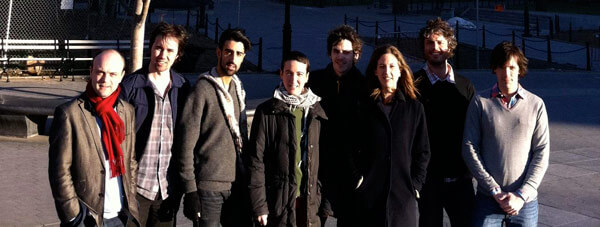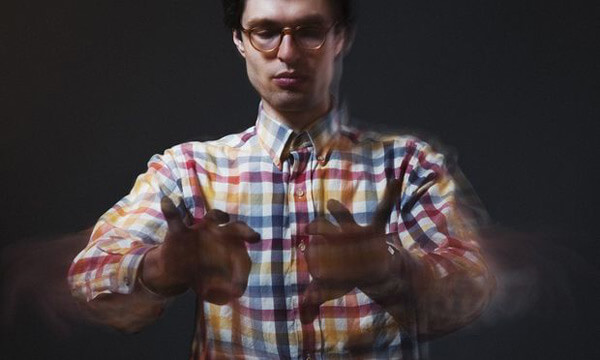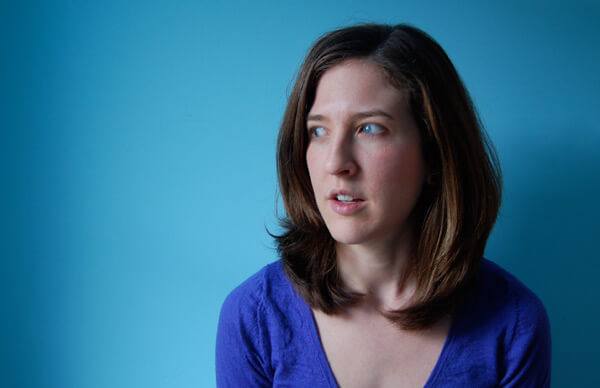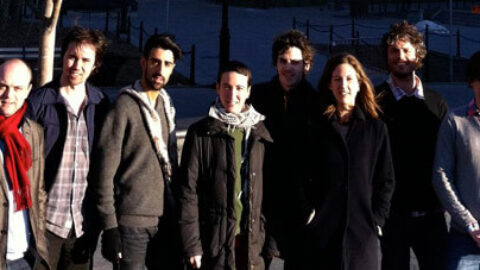 In every musical era, composers have conversations with their instruments, and each conversation is different. The sounds composers sought from violins in the 18th century is not the same as what a composer seeks from a violin today. Sure, there is the fundamental concept of the bow gliding across the strings, but the sounds associated with a violin have evolved tremendously over the years thanks to extended techniques, electronic processing, and the constantly shifting ways in which composers and performers approach music-making. New York’s W4 New Music explored this relationship between composer and instrument in their New Music for Old Instruments concert on April 5, 2013, at the South Oxford Space in Brooklyn.
In every musical era, composers have conversations with their instruments, and each conversation is different. The sounds composers sought from violins in the 18th century is not the same as what a composer seeks from a violin today. Sure, there is the fundamental concept of the bow gliding across the strings, but the sounds associated with a violin have evolved tremendously over the years thanks to extended techniques, electronic processing, and the constantly shifting ways in which composers and performers approach music-making. New York’s W4 New Music explored this relationship between composer and instrument in their New Music for Old Instruments concert on April 5, 2013, at the South Oxford Space in Brooklyn.

W4 New Music, a composer collective consisting of Molly Herron, Matt Frey, Tim Hansen, and Ruben Naeff, presented a unique program that placed baroque instruments in a modern concert setting, challenging the composers to write for instruments that are no longer commonly used, except by early music specialists. New Music for Old Instruments was the first of a pair of concerts. The other, titled New Music for New Instruments, will explore how modern composers interact with newly created instruments.
First on the program was the premiere of recent Pulitzer Prize winner Caroline Shaw’s [avec sous-titres en anglais] for soprano, cornetto, and bass viola da gamba. The piece began with a humming voice, out of which grew the sounds of the cornetto. The timbral quality of the voice and cornetto created wonderful sonorities that continued as the arpeggiating viola da gamba entered. [avec sous-titres en anglais] is built on beautiful harmonies and an excellent use of the period instruments, striking a perfect balance between sound and timbre among the trio.

Timothy Andres’ Talking About Dancing followed. It was one of two works performed that was not a premiere. The piece, written for harpsichord, baroque violin, and bass viola da gamba, was very fun to listen to. The interaction and play between the instruments was great, and the use of the baroque instruments reflected a distinctly modern twist on an old sound.
A larger ensemble piece, Pyramus and Thisbe by Doug Balliet, was next on the program. Written for soprano, contralto, narrator, recorder, cornetto, baroque violin, baroque viola, and bass viola da gamba, the piece had the largest ensemble of the night. Balliet’s work is the sixth in a series of rap cantatas written by the composer based on Ovid’s Metamorphoses. The libretto, written by Balliet, is light-hearted yet dark, and it had the audience laughing one minute and in tears (at least I was) the next, as it recounts the tragic tale of Pyramus and Thisbe. The witty poetry combined with the instrumental support proved successful, and Pyramus and Thisbe was one of the most interesting pieces on the program.

After a short pause, harpsichord, baroque violin, tenor viola da gamba, and bass viola da gamba took to the stage to premiere W4 New Music member Molly Herron’s Neon Helix. The rhythmically driven piece utilized beautiful sonorities, varying between sparse and dense sections that ultimately found a good balance between the two. Neon Helix had a spiraling quality, each instrument turning back on itself and then heading in a new direction, all around some present yet invisible axis. Herron’s music marked a unique take on the limitations of the old instruments, showcasing a wonderful consideration of counterpoint and the sound-in-time.
What You Resist by Matt Frey, another member of W4 New Music, received its premiere after Herron’s piece. Another large ensemble work, What You Resist is written for contralto, recorder, harpsichord, baroque violin, tenor viola da gamba, and bass viola da gamba. Through the use of these instruments, Frey found a balance between a sound that is both delicate and powerful, creating a passionate piece that resonated strongly with listeners. The chordal string section within the piece was particularly effective.

The final piece was Tristan Perich’s Dual Synthesis for harpsichord and 4-channel 1-bit electronics, the second work on the concert that was not a premiere. The piece was very enchanting, the sonic texture between the harpsichord and electronics blending perfectly, inhibiting the listener from telling where one ends and the other begins. The hypnotic movement and static harmonies of the opening eventually gave way to a dramatic harmonic shift, where one could feel the entire audience give a collective sigh of wonder. As the piece moved forward, it slowly returned to where it began. Dual Synthesis was a difficult test for the harpsichordist, and Karl Larson showed a tremendous amount of precision and skill while performing it.
New Music for Old Instruments was a fascinating display of the interaction between modern composers and baroque instruments. Each conversation was unique, and each composer approached writing for the instruments in a completely different way. The next concert in the pair, New Music for New Instruments, will likely be as interesting and varied, if not more so. Leading up to the concert, there will be a series of informal previews, consisting of performances and Q&A sessions with the instrument creators. The first preview for New Music for New Instruments will take place on July 7, 2013, at 2:00 PM at the Invisible Dog Gallery.
























